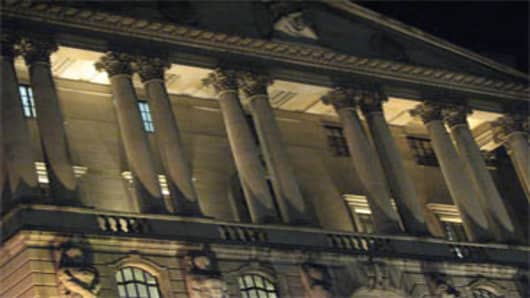The Bank of England's injection of 175 billion pounds ($289 billion) into the economy hasn't yet pulled Britain out of recession, and the central bank now faces a difficult decision on whether to raise the stakes.
The bank's monetary policy committee began its monthly two-day meeting on Wednesday, a day before it announces its latest decision on interest rates and quantitative easing, its strategy of stimulating the economy by inflating the money supply.
Markets are waiting to see if the amount will be increased, and if so, by how much. Some think the bank could add 25 billion pounds or more.
"The decision appears finely balanced, although expectations are tilted towards an extension," said Simon Hayes at Barclays Capital.
The decision comes two weeks after disappointing news that U.K. gross domestic product, or economic output, fell by 0.4 percent in the third quarter, contrary to expectations that the economy would move into growth.
The key interest rate is expected to stay at a record low of 0.5 percent for the eighth consecutive month, but the market has been left guessing about the Bank's next move on monetary easing.



